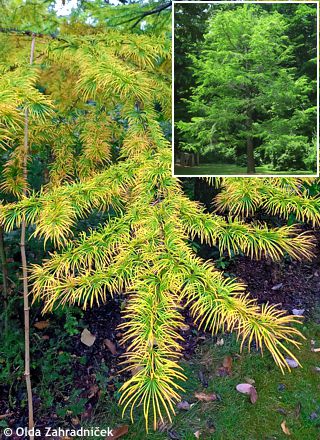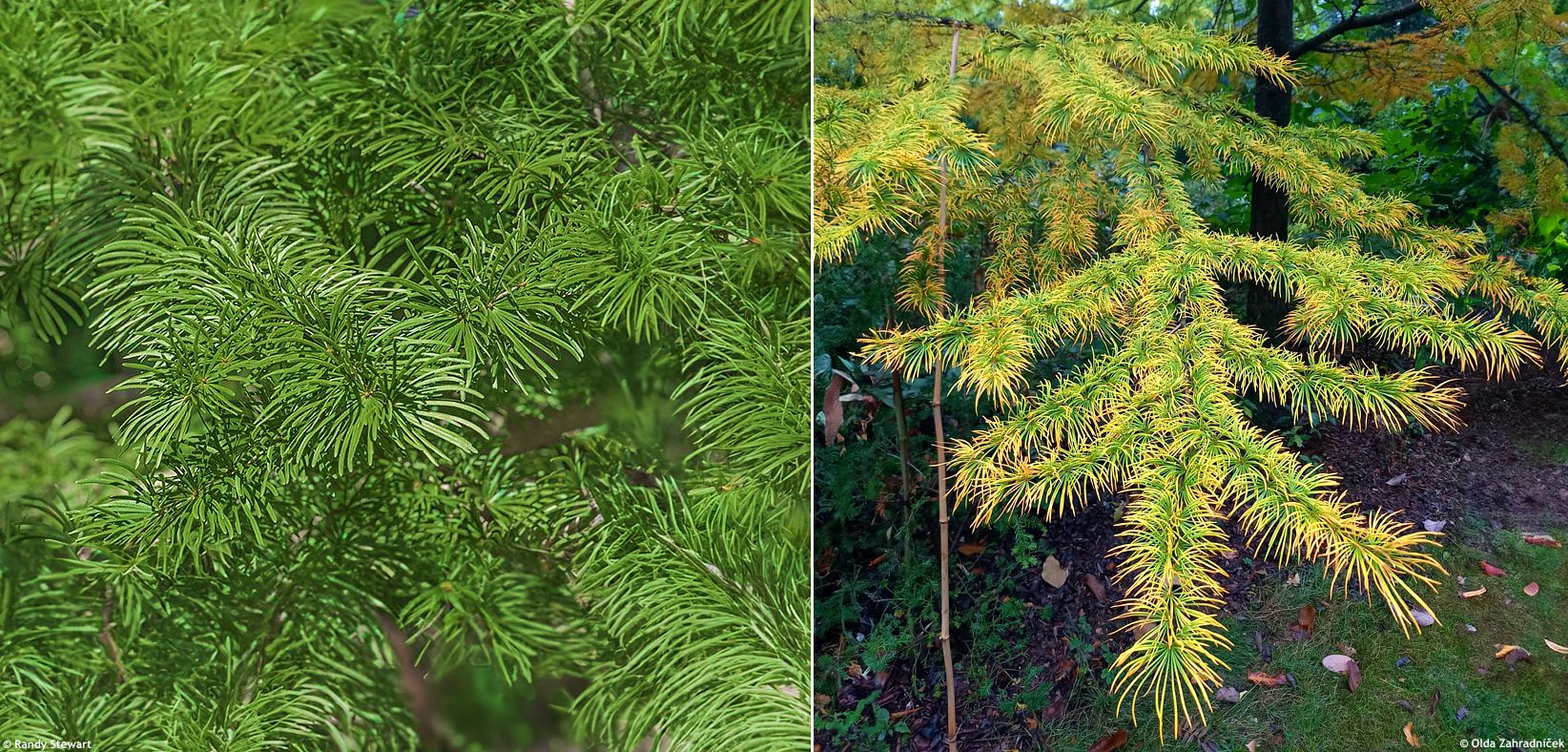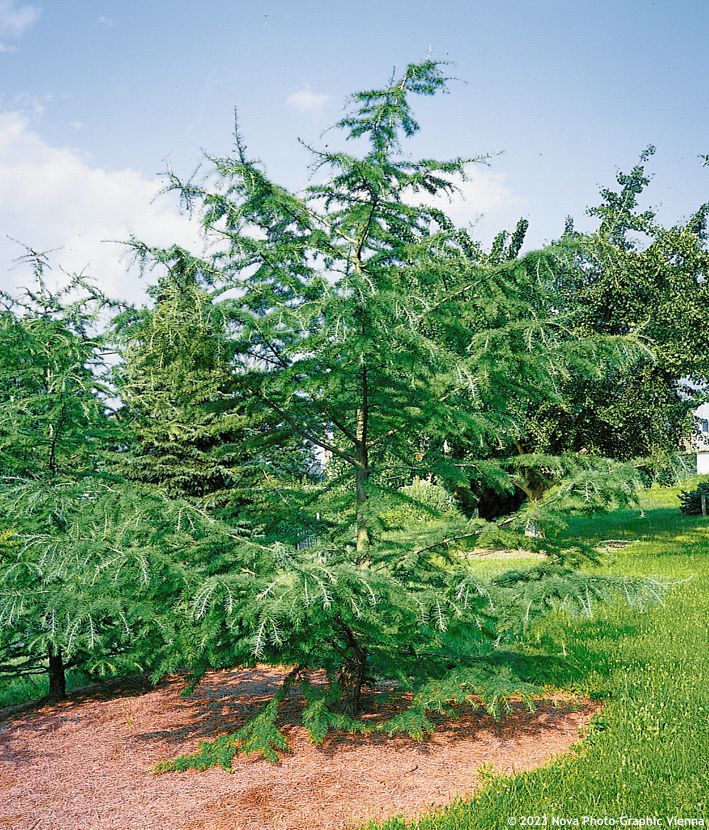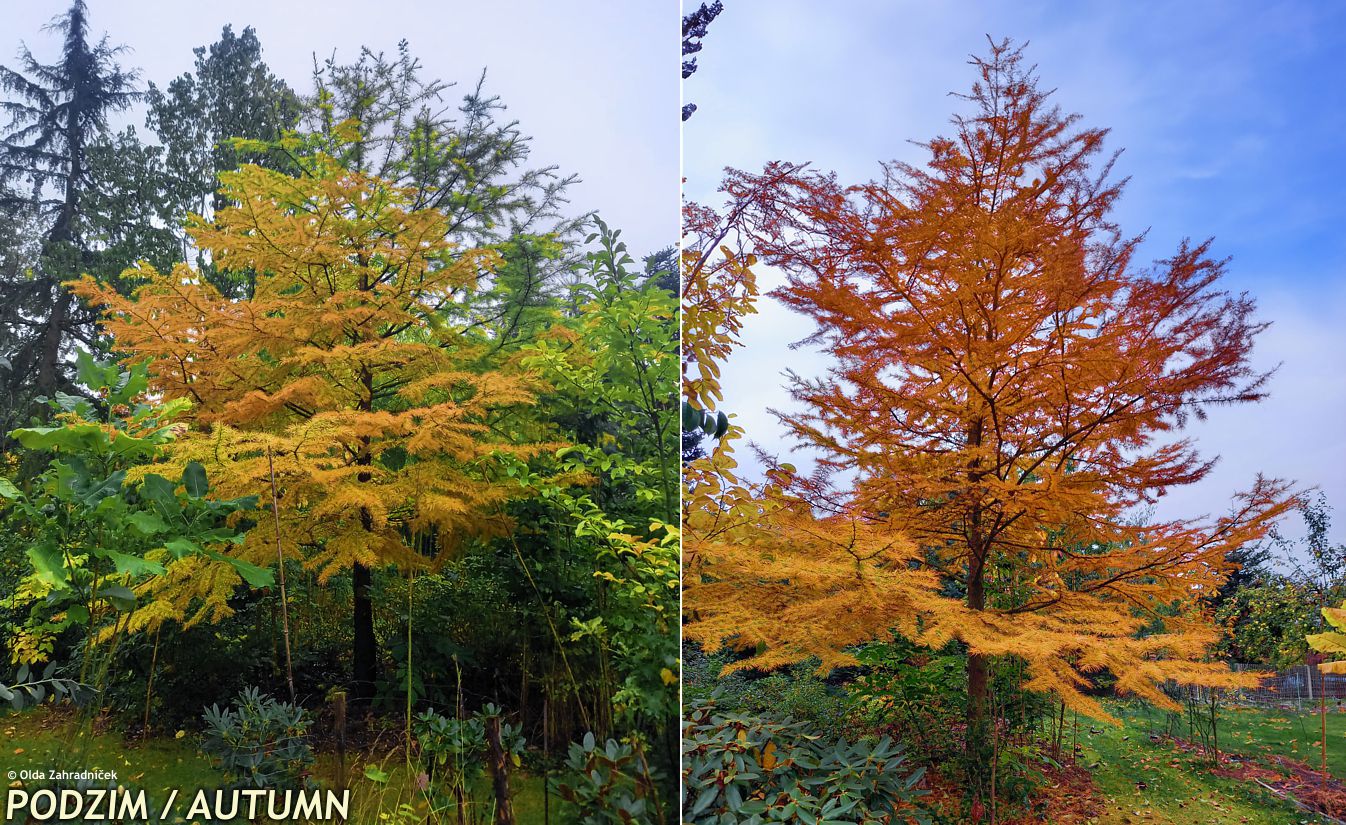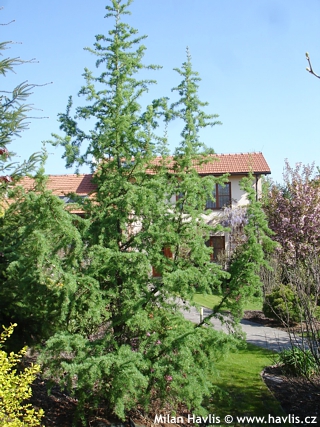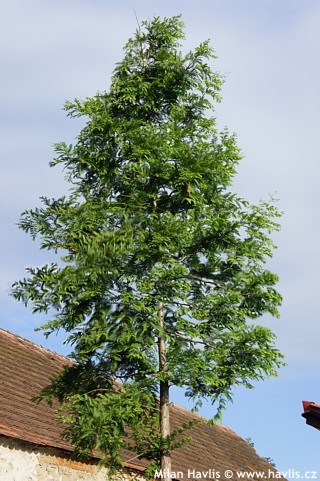Pseudolarix amabilis (syn. Pseudolarix kaempferi) Golden larch
Pseudolarix is a genus of one species only pseudolarix amabilis - golden larch, formerly also called p. kaempferi after the German naturalist, physician, and botanist Engelbert Kaempfer (1651-1716). He was a man of many interests, all of which led to Asia (history, healing methods, and obviously botany of Persia and Japan). From 1690 to 1691 he stayed in Japan where he discovered and described in detail some plants that had not been known to the West at that time. After his return he published his descriptions along with excellent drawings in Flora Japonica. Can you imagine doing such a job in today's digital age when everyone can take a great photo with an ordinary phone in his pocket? Kaempfer is mainly renowned for introducing maidenhair tree (Ginkgo biloba) as he was the first Westerner to see it grow in all its glory at a Buddhist temple in Nagasaki. He collected and brought back seeds to Europe and sowed them in the botanical garden in Utrecht where some specimens can still be found today. Among his other introductions are camellias, rhododendrons (azaleas), and Japanese larch, of which over 30 varieties have been bred and registered until now.
Paradoxically, golden larch was not one of his discoveries - it was first brought from China to Europe (to England) in 1852 by another famous botanist, Robert Fortune. According to the fossils, this tree existed on our planet during the Upper Cretaceous, some 95 million years ago. Do you know the joke about someone or something being too old? It says that he or it remembers when the Dead Sea was alive. I wanted to use it here but couldn’t as it would be very inaccurate since the Dead Sea was formed "only" 3 million years ago 😁.
Golden larch is similar to common larch being a deciduous conifer with soft, linear, fresh green needles. Their length varies widely by the mother plant the tree was propagated from: 3-7 cm. In autumn they turn bright golden yellow before darkening to bronze and falling off. In fact, it is mostly the autumn show this tree is often planted for, as it can light up any garden or park at the very end of the season.
It grows quickly, upright, and forms airy, broadly cone-shaped canopies with conspicuous tiers. It looks somewhat exotic, because its long needles can easily be seen from afar and don’t look like anything else in our flora. The canopy is well-branched, yet it does not cast a deep shade. There is enough light filtered down to the plant growing under its crown. Thanks to its rapid growth, it makes nice and straight trunks, which, as the tree gets older, makes narrow, red furrows and slightly flakes off, just like, for example, the metasequoia.
Golden larch grows best in deep soils that is not too calcareous, with enough nutrients and moisture, but without permanent waterlogging. Its strong roots point down, so it doesn't heave foundations, walls, or pavements. It loves sunny and warm locations and plenty space, but it welcomes protection from the windward side in form of other trees growing nearby or even a woodland. Pruning is possible and is best done in early spring to enhance branching or in summer for shaping. It is hardy to at least -34 °C (USDA zone 4) and lab tests proved its tissue hardy to -45 °C. Still, young trees were killed at -35 °C.
Last update 29-10-2023

































